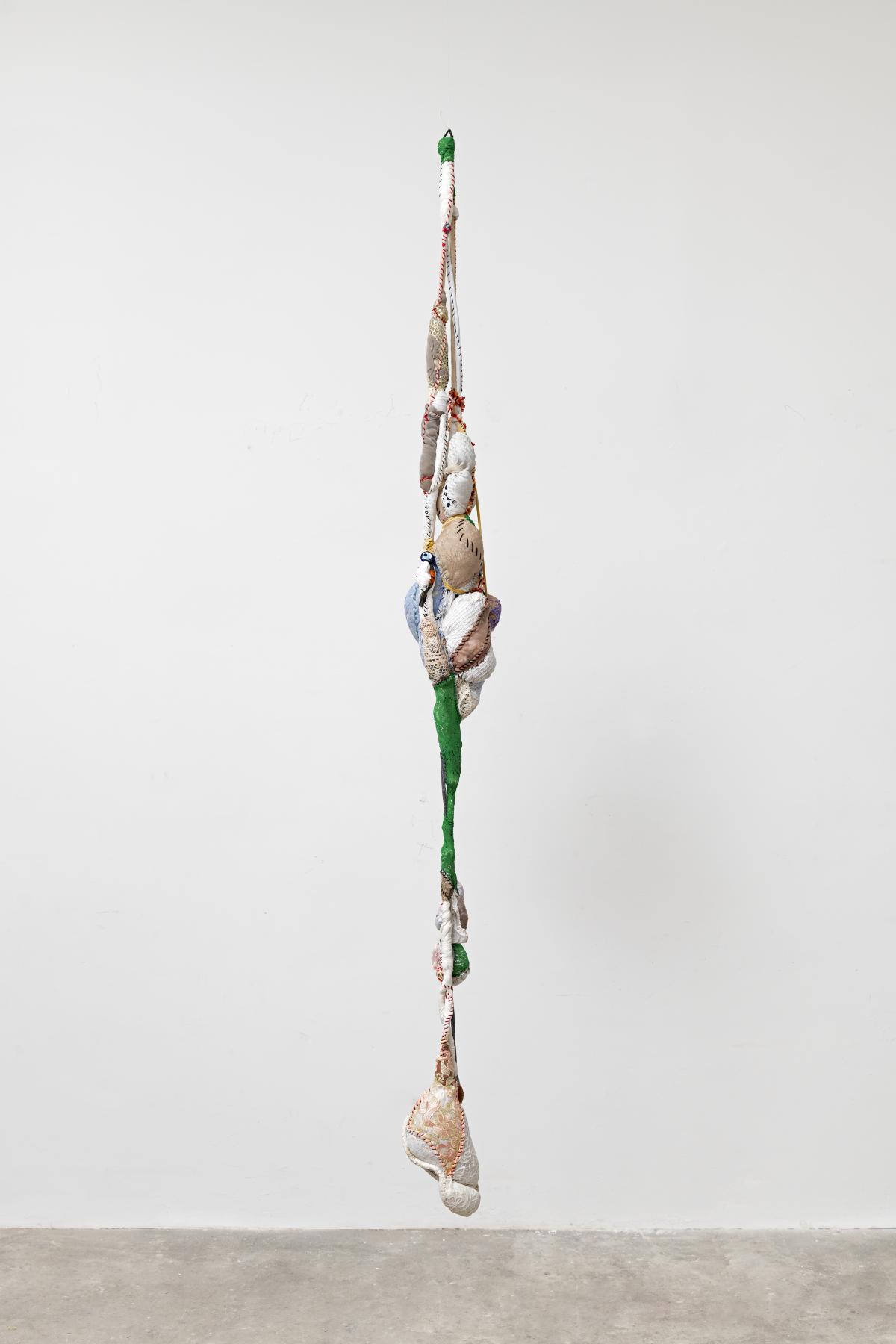On view

Brazilian, b. 1948
Untitled (Pendente series)
, 2023
Stitching, bindings, various fabrics, rope, lace, beads, and buttons
8 ft. 6 3/8 in. x 10 5/8 in. x 9 7/8 in. (260 x 27 x 25.1 cm)
Courtesy of the artist and Pace Gallery
Photo by Edouard Fraipont
Suspended like offerings mid-air, works from Gomes’s series Pendente (Hanging) are anchored by a central cord from which bulging fabric forms, beads, buttons, and lace cascade downward. Some trail gently to the floor, while others hover just above it—held in tension between gravity and grace. Each seems to breathe, sway, and hum with its internal rhythm.
Gomes conceives of these works as responsive—attuned to their environments and shaped by the spaces they inhabit. Like African hair-braiding, where each strand is woven with an intuitive, rhythmic flow, the Pendentes build structure and voids. The sculptures’ balance of volume and emptiness also echoes musical composition, where the spaces between notes are as essential as the forms themselves.
In past installations, such as Sinfonia das cores (Symphony of Colors) at the Pinacoteca in São Paulo and the Holy See Pavilion at the 2024 Venice Biennale, Gomes has used groups of Pendentes to engage with architectural and historical contexts. Their suspended bodies—light-catching, shadow-casting, and delicately layered—transform spaces into places of memory, movement, and resonance, much like a musical piece that lingers in the air after the final note.
Gomes conceives of these works as responsive—attuned to their environments and shaped by the spaces they inhabit. Like African hair-braiding, where each strand is woven with an intuitive, rhythmic flow, the Pendentes build structure and voids. The sculptures’ balance of volume and emptiness also echoes musical composition, where the spaces between notes are as essential as the forms themselves.
In past installations, such as Sinfonia das cores (Symphony of Colors) at the Pinacoteca in São Paulo and the Holy See Pavilion at the 2024 Venice Biennale, Gomes has used groups of Pendentes to engage with architectural and historical contexts. Their suspended bodies—light-catching, shadow-casting, and delicately layered—transform spaces into places of memory, movement, and resonance, much like a musical piece that lingers in the air after the final note.
